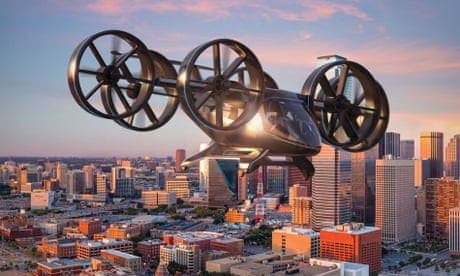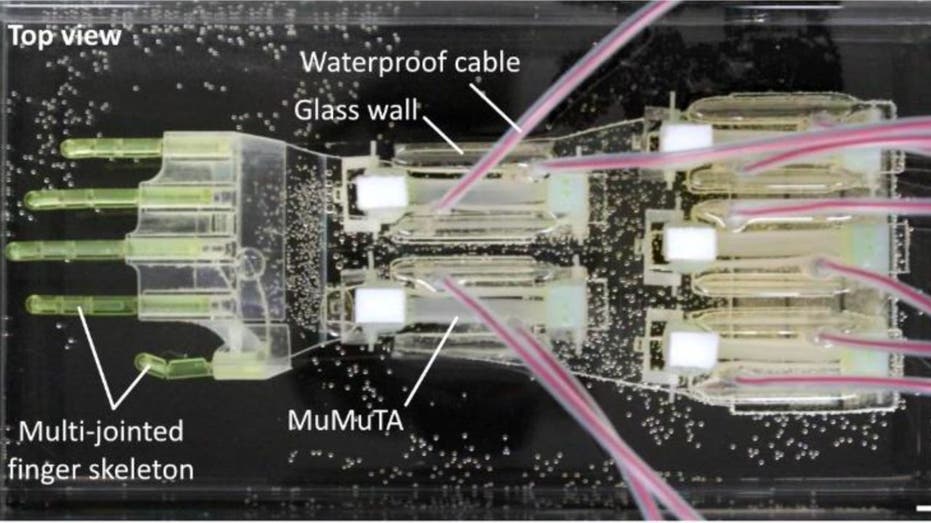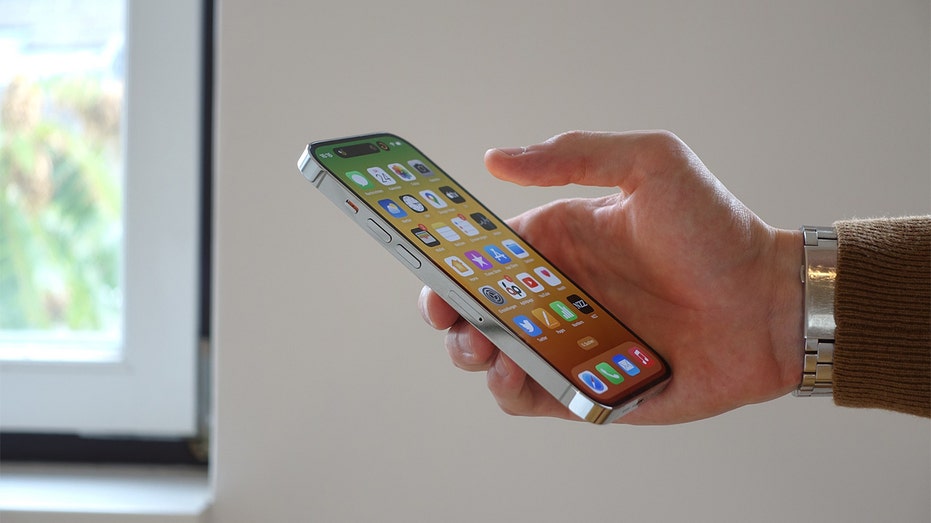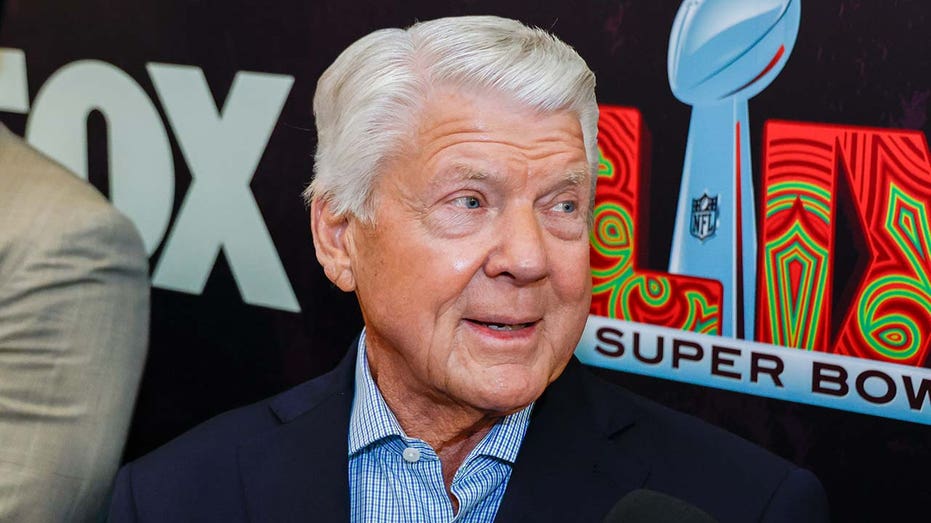- by foxnews
- 04 Mar 2025
?Optimism is the only way forward?: the exhibition that imagines our future
‘Optimism is the only way forward’: the exhibition that imagines our future
- by theguardian
- 07 Dec 2021
- in technology

If America has stood for anything, it's surely forward-looking optimism. In New York, Chicago, Detroit and other shining cities, its soaring skyscrapers pointed to the future. But has the bubble burst in the 21st century?
"We don't see ourselves striding toward a better tomorrow," columnist Frank Bruni wrote in the New York Times last month, citing research that found 71% of Americans believe that this country is on the wrong track. "We see ourselves tiptoeing around catastrophe. That was true even before Covid. That was true even before Trump."
This disquiet hovers over Futures, a new exhibition that marks the reopening of the Smithsonian Arts and Industries Building after nearly two decades lying moribund on Washington's National Mall.
Spanning 32,000 sq feet, the show offers a sobering reminder from the past that utopian predictions of the future usually turn out to be wrong. It warns about the danger of unintended consequences: today's wonder invention is tomorrow's arch polluter. And then it has a dilemma familiar to journalists who report on the climate crisis: how to walk the line between alarm and fatalism.
"It's a needle we tried to thread throughout the whole exhibition," says Rachel Goslins, director of the Arts and Industries Building. "How do we be hopeful without being naive and how do we surface challenges without creating more anxiety?
"Everybody wanted to be part of this exhibition because there's a real hunger on the part of artists, designers and scientists to be part of a narrative that allows people to imagine the future they want and not the future they fear. To be part of an exhibition that came from a place of hopefulness about the future was attractive."
The display includes innovations in protein production, a "bioreactor" that uses algae to capture carbon from the air with 400 times the efficiency of a tree, an alternative to a coffin in the form of a biodegradable capsule that enables a decomposing body to nourish a tree, and coin-operated washing machines hooked up to grow a garden of wetland plants - "an ecosystem on rinse cycle".
Goslins continues: "Sustainability is woven throughout the whole exhibition, partially in how we built it and the materials we use, but also in the solutions we explore. There are a lot of really big ideas in this exhibition that, if they come to scale, could fundamentally change our relationship with the planet.
"No single one of these things is the answer but what we want people to take away is that there are solutions out there, there are answers out there. We have to pick them and we have to invest in them."
But there are also be-careful-what-you-wish-for lessons from the past. Among the objects on show is a 1909 cast iron "Bakelizer" machine used by chemist Leo Baekeland to manufacture the world's first synthetic plastic, or Bakelite. At first this seemed a giant gain that could be used in electronics, jewelry, toys and much else; now it is recognised as a clear and present danger to the environment.
"In so many ways, it opened up the world," Goslins reflects. "Because of plastic, we can put artificial hearts in babies and we have cars that go faster and are lighter and use less resources. We can fly to the moon. But also because of plastic, our planet is choking.
"So as we ask people to walk through this exhibition and imagine the future they want and imagine the possibilities, we're also asking them to be thoughtful about what the consequences of those choices are and how we can act to lean into the best case scenario of some of these technologies and ideas and avoid the worst-case scenario."
Among the stars of the show are the Bell Nexus, a self-driving hybrid-electric air taxi that has a Star Wars grandeur, and Virgin's Hyperloop vehicles which speed at 600 miles per hour through an enclosed tube with most of the air removed to eliminate aerodynamic drag. The latter is displayed with a subway-style map that envisions travelling from Boston to New York in 25 minutes, from there to Philadelphia in 12, from there to Baltimore in 13, from there to Washington in six, and so on all the way to Seattle.
Other highlights include costumes from the Marvel Studios movie Eternals, part of an interactive exhibit that shows how films imagine the future, and objects such as a tortoise robot from 1950, an AI-powered kinetic sculpture, an experimental Alexander Graham Bell telephone, the first full-scale Buckminster Fuller geodesic dome built in North America and "the first genderless voice".
There is a solar panel installed at the White House by President Jimmy Carter at the height of the energy crisis in 1979; they were subsequently removed by the Ronald Reagan administration.
At the heart of the show is "me + you", a sculpture by artist Suchi Reddy that incorporates artificial intelligence and is sponsored by Amazon Web Services. It listens for the words "My future is ..." at several circular listening posts and renders the speaker's sentiment in a display of coloured lights and patterns. Its interpretations will evolve and become more nuanced over time.
Standing beside "me + you" in the vast central rotunda, Goslins says: "I saw it in renderings and then I saw it half-assembled, I saw it in pieces and now I get to see it for real. It's fantastic.
"It is this gorgeous, inspiring, luminous structure that's meant to capture the hopes and dreams of our visitors and mirror those back to them. That is literally the raison d'etre of this exhibition, so it's a wonderful metaphor and it's also just a really fun thing to interact with."
The British novelist LP Hartley observed: "The past is a foreign country; they do things differently there." The Futures exhibition serves up reminders of the follies of the past. The 1904 World's Fair in St Louis, it notes, was supposed to mark America's progress and displayed the automobile, outdoor electric lighting and X-rays.
The Arts and Industries Building itself has a storied history and mix of architectural styles. It was the first US national museum and the first museum built on the national mall. For 140 years it was a "Palace of Wonders" with contents such as the original Spar-Spangled Banner, the Spirit of St Louis aeroplane and the Apollo 11 command module from the first moon landing.
But those objects dispersed to other museums in the Smithsonian Institution, which celebrates its 175th birthday this year. The Arts and Industries Building went dark in 2004, in part because of a need for structural renovation. Now it reawakens with Futures, scheduled to remain open until 6 July and designed by the award-winning architecture firm Rockwell Group.
David Rockwell, 65, its founder and president, says: "I thought the building was such an incredible survivor and had seen so many versions of what the future was going to be and had been through so much history, so when Rachel approached us it felt like an amazingly worthwhile project. I liked the fact that I didn't know the answer before we began. That's a sign of a good project."
Like Goslins, Rockwell hopes that visitors will come away with a sense of possibilities about the future rather than paralysing despair. "We are living in a world in which there seems to be endless debate about everything and we've been through an enormous upheaval.
"Optimism is the only way forward. It doesn't mean blind optimism, but optimism where you're able to be prompted by things you hadn't thought about. What's the future going to be like in 10, 20, 30, 50 years?"
- by foxnews
- descember 09, 2016
Bus travel sees 'steady growth' as flyers seek alternative transportation
People who ride on airplanes might rely on alternative transportation for a number of reasons. A CEO of a bus travel company shares insights with Fox News Digital.
read more





